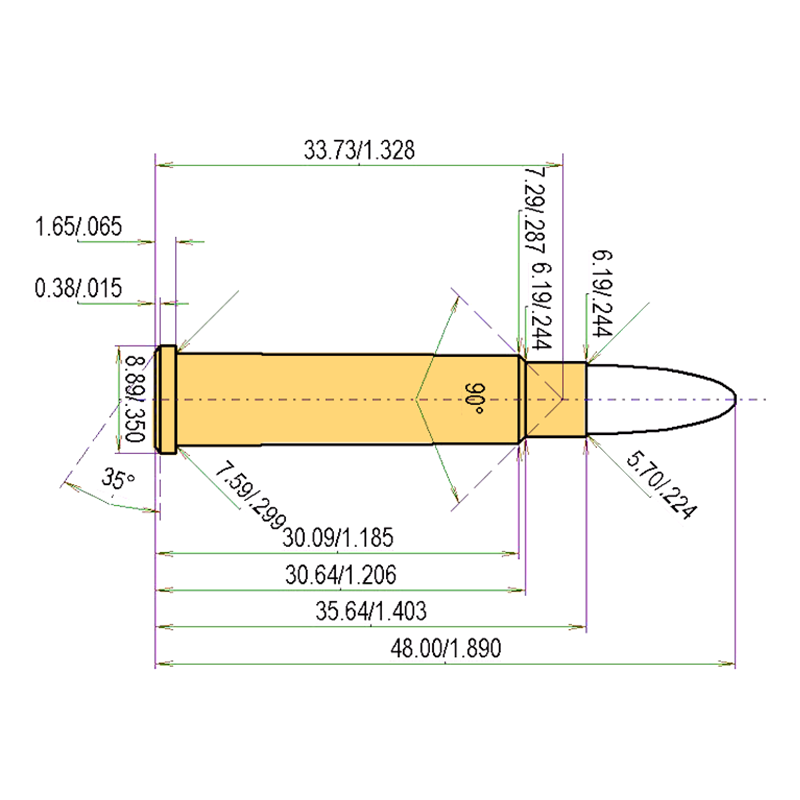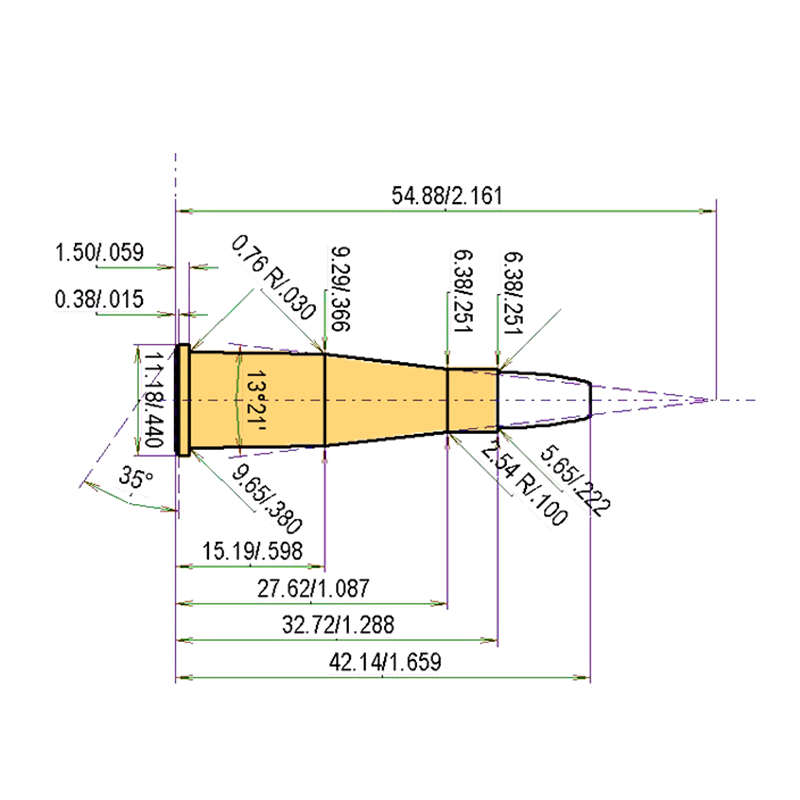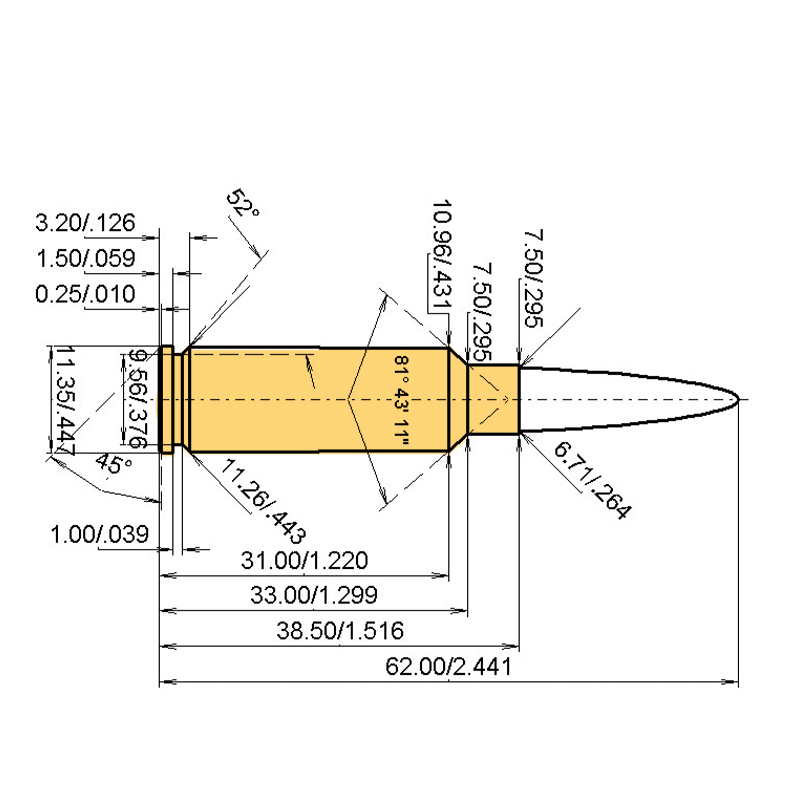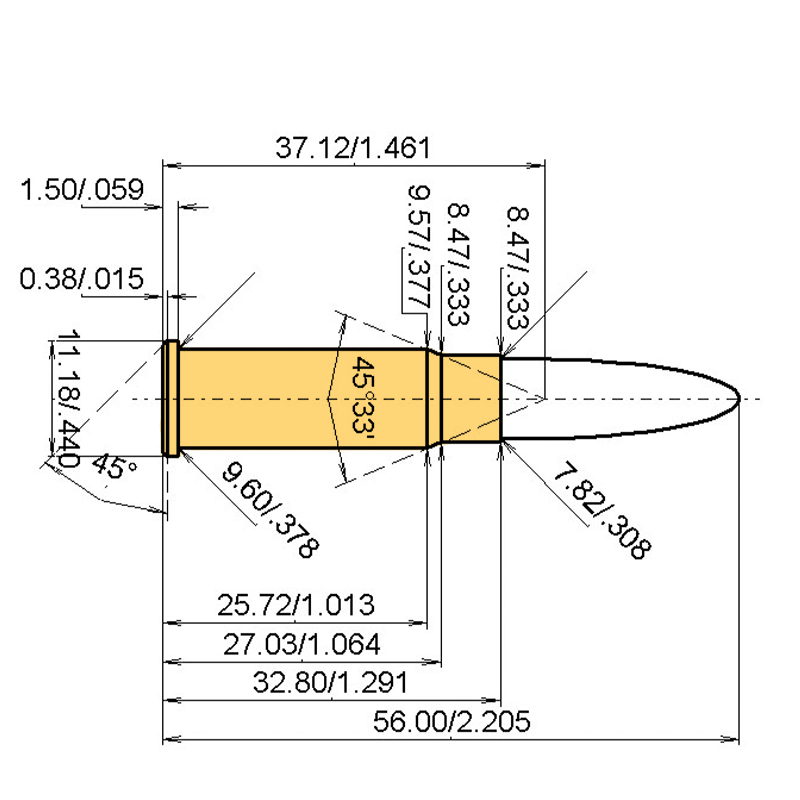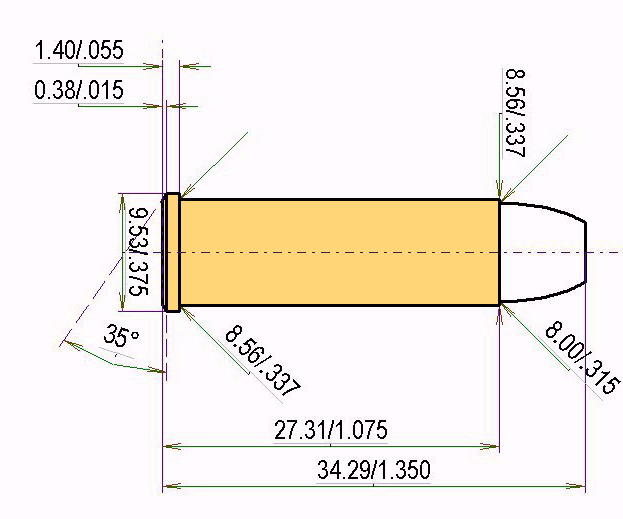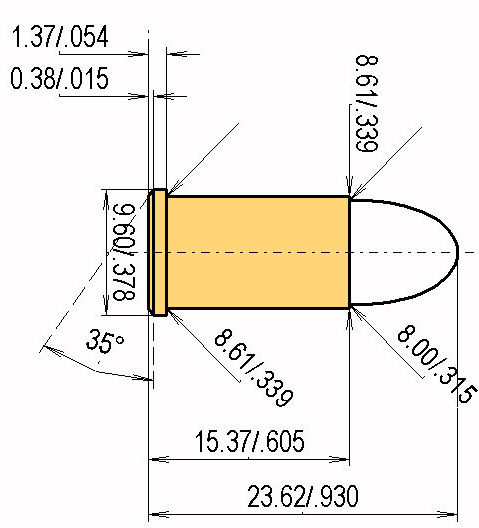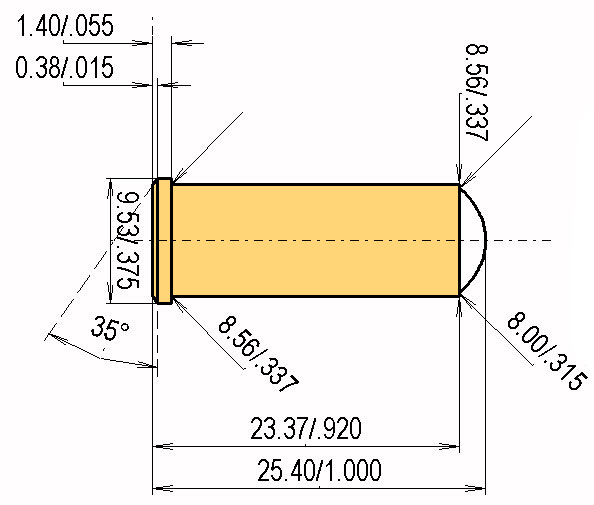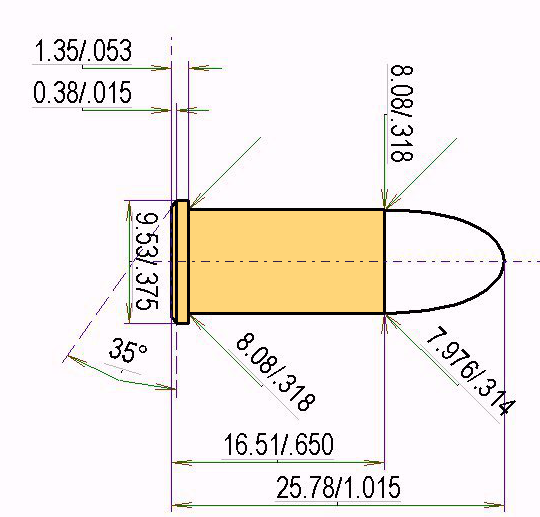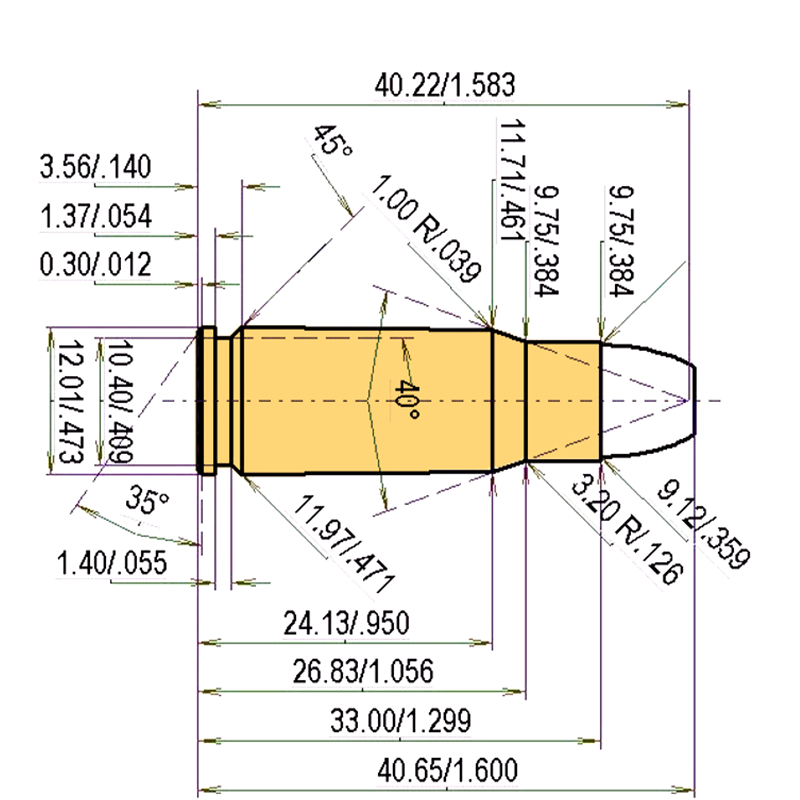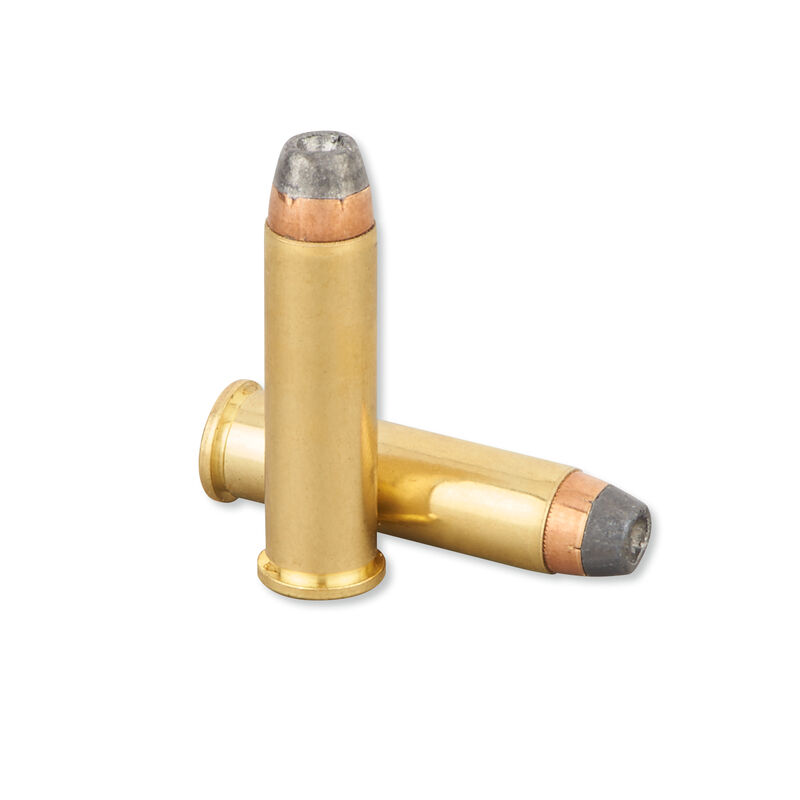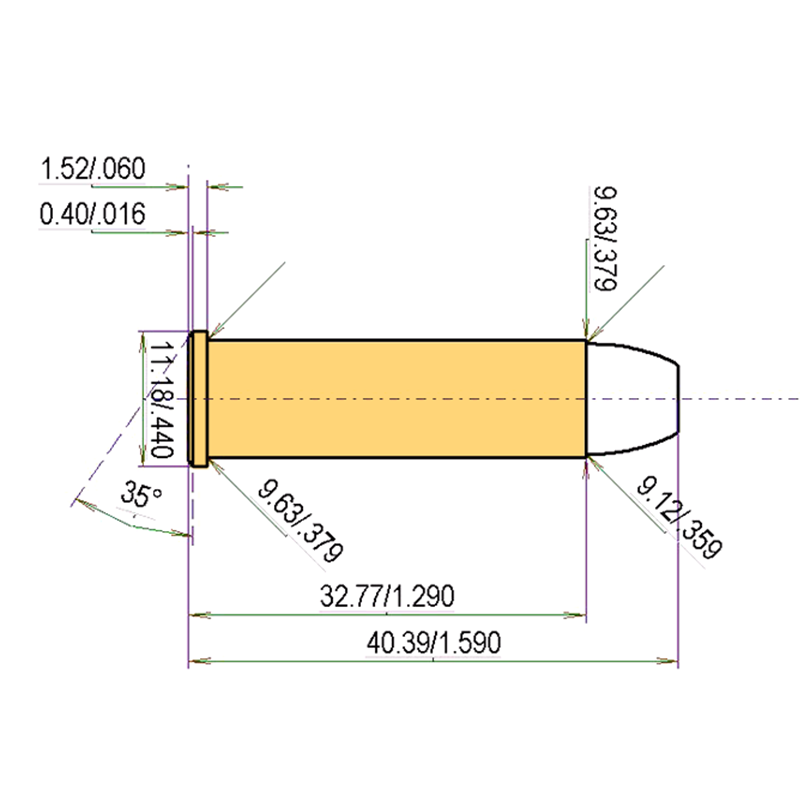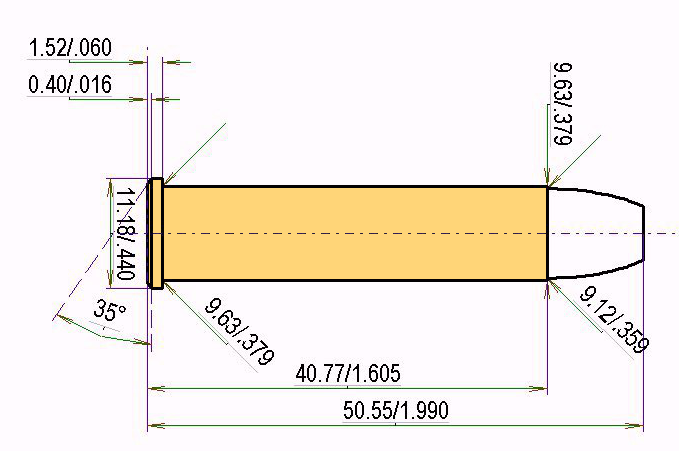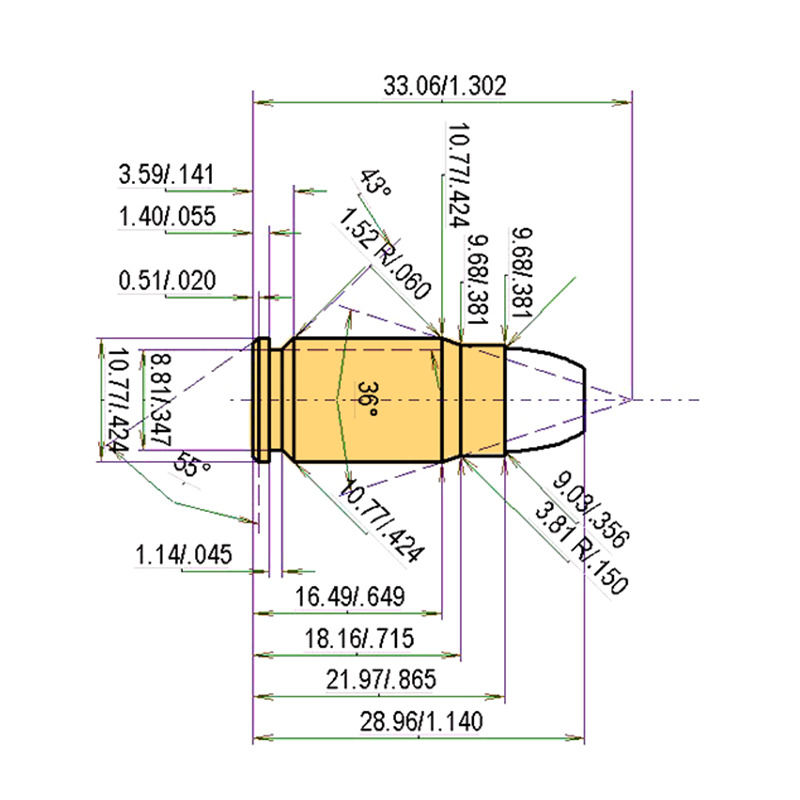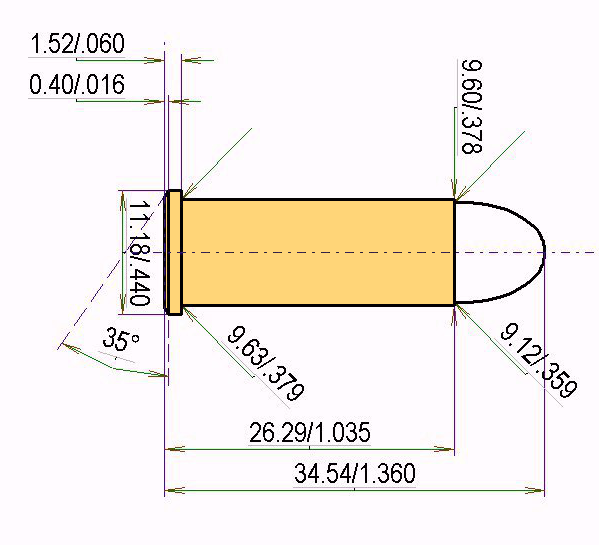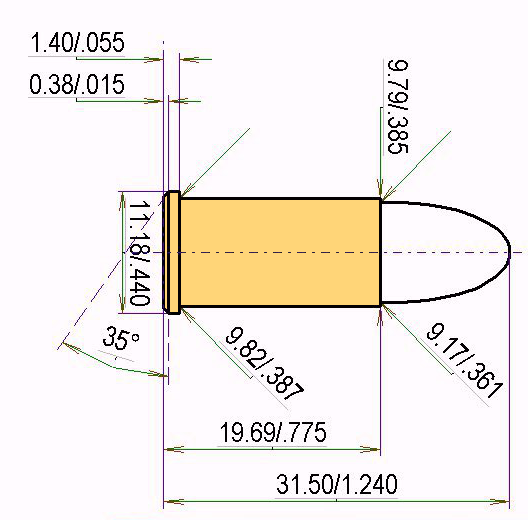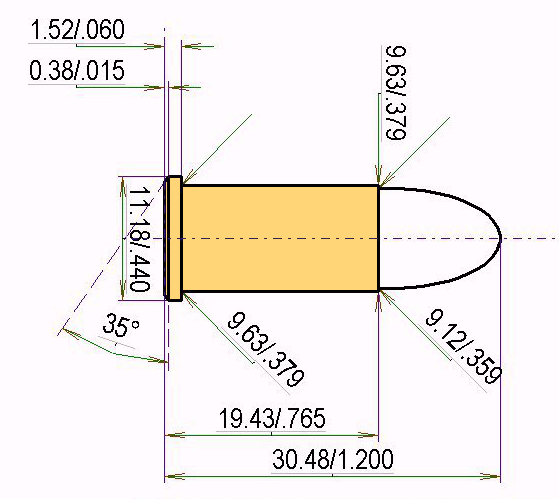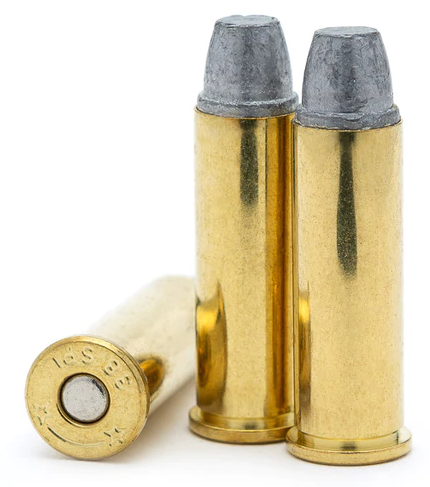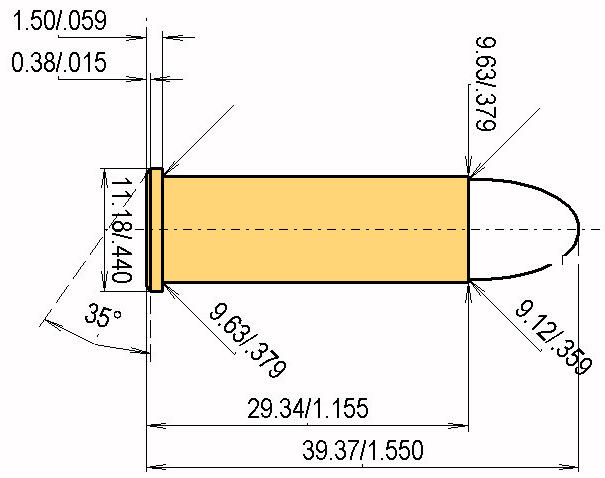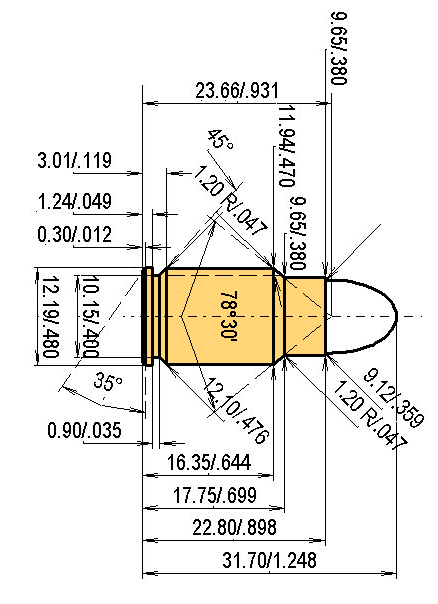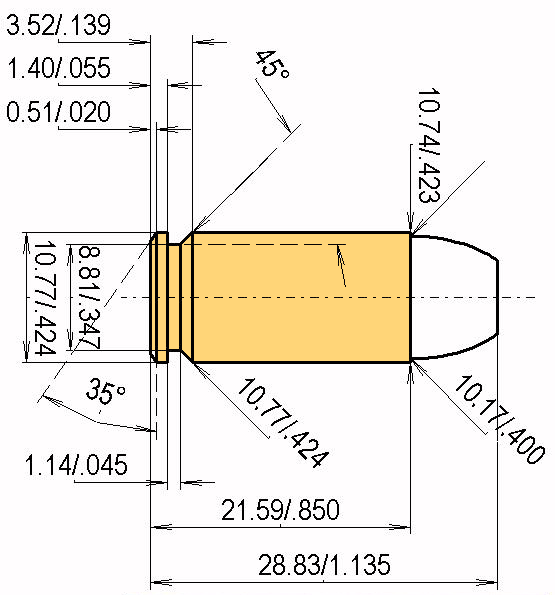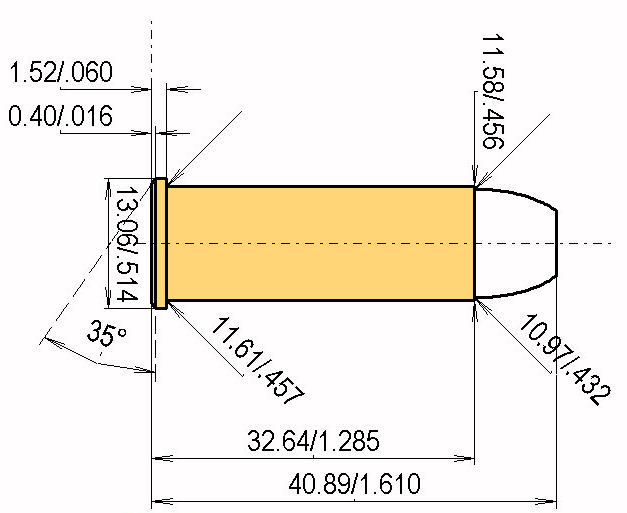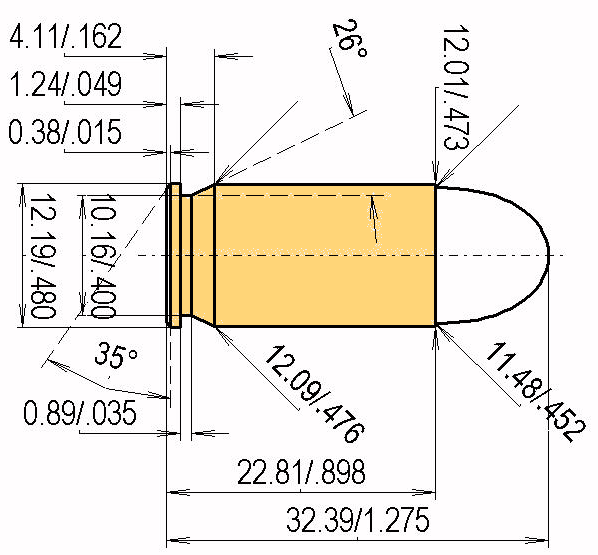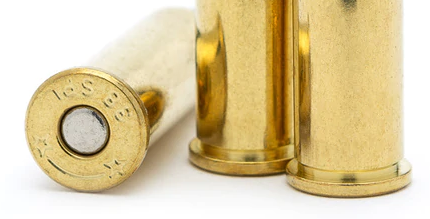
Pistol / Revolver Cartridges
Max. Case Length (l3): 1.4'' | 35.64 mm
Maximum Standardized Pressure: 46412.8 psi | 3200 bar
Max. Case Length (l3): 1.28'' | 32.46 mm
Maximum Standardized Pressure: 36985.2 psi | 2550 bar
Max. Case Length (l3): 1.52'' | 38.48 mm
Maximum Standardized Pressure: 56565.6 psi | 3900 bar
Max. Case Length (l3): 1.29'' | 32.79 mm
Maximum Standardized Pressure: 40611.2 psi | 2800 bar
Max. Case Length (l3): 1.07'' | 27.1 mm
Maximum Standardized Pressure: 23496.48 psi | 1620 bar
Max. Case Length (l3): 0.92'' | 23.27 mm
Maximum Standardized Pressure: 14504 psi | 1000 bar
Max. Case Length (l3): 0.6'' | 15.37 mm
Maximum Standardized Pressure: 13053.6 psi | 900 bar
Max. Case Length (l3): 0.92'' | 23.25 mm
Maximum Standardized Pressure: 14504 psi | 1000 bar
Max. Case Length (l3): 0.91'' | 23.2 mm
Maximum Standardized Pressure: 22481.2 psi | 1550 bar
Max. Case Length (l3): 0.65'' | 16.51 mm
Maximum Standardized Pressure: 14504 psi | 1000 bar
Max. Case Length (l3): 1.3'' | 32.99 mm
Maximum Standardized Pressure: 36985.2 psi | 2550 bar
Max. Case Length (l3): 1.29'' | 32.77 mm
Maximum Standardized Pressure: 43512 psi | 3000 bar
Max. Case Length (l3): 1.6'' | 40.64 mm
Maximum Standardized Pressure: 44962.4 psi | 3100 bar
Max. Case Length (l3): 0.86'' | 21.84 mm
Maximum Standardized Pressure: 44237.2 psi | 3050 bar
Max. Case Length (l3): 1.03'' | 26.29 mm
Maximum Standardized Pressure: 13053.6 psi | 900 bar
Max. Case Length (l3): 0.78'' | 19.68 mm
Maximum Standardized Pressure: 17404.8 psi | 1200 bar
Max. Case Length (l3): 0.76'' | 19.18 mm
Maximum Standardized Pressure: 13053.6 psi | 900 bar
Max. Case Length (l3): 1.14'' | 29.08 mm
Maximum Standardized Pressure: 21756 psi | 1500 bar
Max. Case Length (l3): 0.9'' | 22.81 mm
Maximum Standardized Pressure: 34084.4 psi | 2350 bar
Max. Case Length (l3): 0.83'' | 21.08 mm
Maximum Standardized Pressure: 32634 psi | 2250 bar
Max. Case Length (l3): 1.27'' | 32.38 mm
Maximum Standardized Pressure: 40611.2 psi | 2800 bar
Max. Case Length (l3): 0.97'' | 24.64 mm
Maximum Standardized Pressure: 14504 psi | 1000 bar
Max. Case Length (l3): 1.15'' | 29.29 mm
Maximum Standardized Pressure: 14504 psi | 1000 bar
Max. Case Length (l3): 0.9'' | 22.81 mm
Maximum Standardized Pressure: 18855.2 psi | 1300 bar

